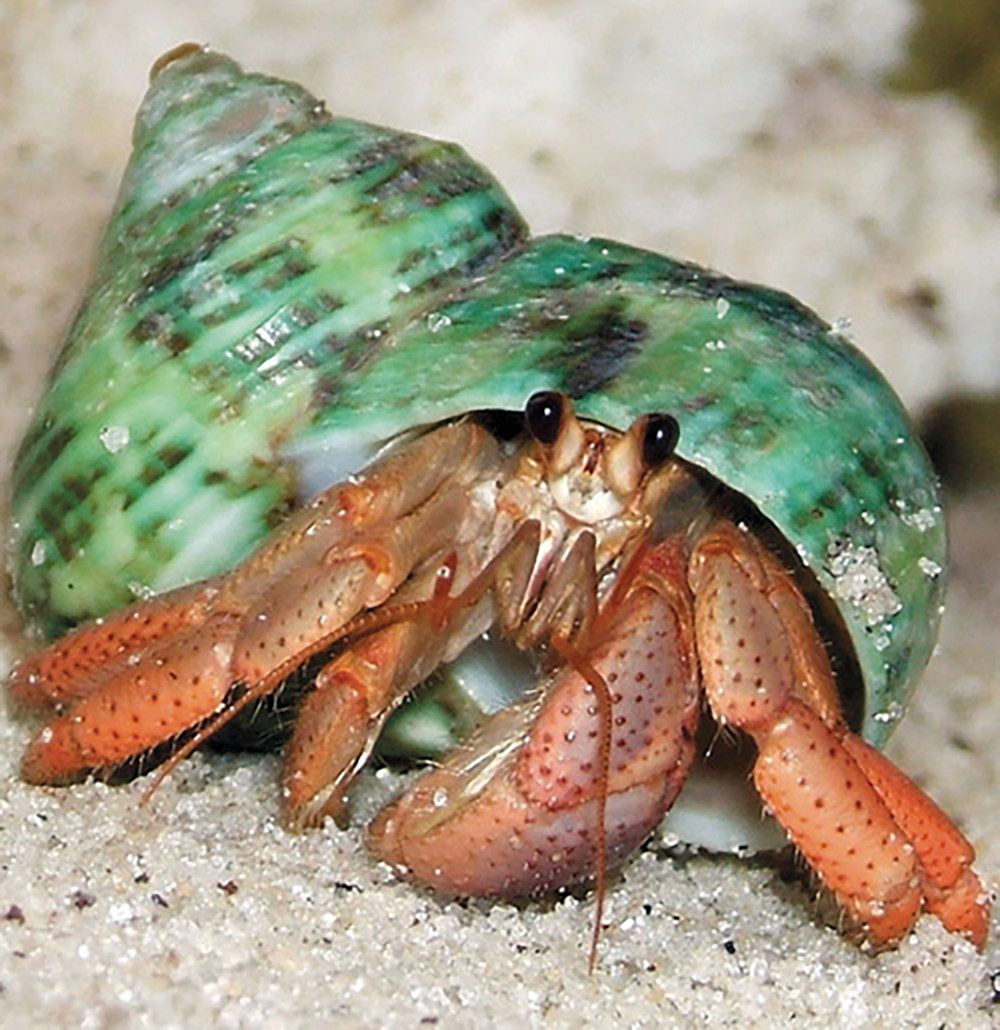Taking Care of Our Crabby Friends
By Steffen Klenk
While visiting the Jersey Shore, you’ll want to bring home something to remember your experience; a memento of all the fun times had while visiting our beautiful beaches. Many shops along the boardwalk sell hermit crabs as pets. Before you invest in making this important purchase, you should have an understanding of how to provide for these creatures and the care they require.
Wild hermit crabs grow in various shapes and sizes, expanding anywhere from a few millimeters to 2 feet in length. You are bound to notice hermit crabs crawling along the beach, or crawling along a seabed. They have been noted to live up to thirty years in their natural environment. With the most optimal conditions, hermit crabs can live anywhere from six months to a year in captivity.
One of the most unique features of the hermit crab is its shell. These small, circular structures protect their fragile ligaments while maintaining the amount of moisture required for their survival. One interesting fact is that they do not grow their own shells; they get their shells from other crabs, gastropods, and snails.
Hermit crabs use a molting process to grow and develop. For a period of one to two months, the crab will hibernate deep into the sand, at which point it will form a new exoskeleton. Once this process has completed, they will seek out a new shell to call home. Hermit crabs will also use their shells for added protection against a large number of predators including fish, snails, and blue crabs.
Before bringing your new hermit crab home, be sure it is set up with the proper environment. Make sure it has an enclosure that is about the size of a ten gallon aquarium. Its home should be equipped with an air screen and plenty of deep sand. Hermit crabs love to exercise, so ensure that they have plenty of room to climb and areas to hide in.

Hermit crabs are a community of social creatures that live in large colonies in the wild. Your pet hermit would love to have several friends with him. It’s best not to have no less than two crabs per cage.
Fluorescent and dome lighting will help keep temperatures at optimal levels for Sheldon to survive; make sure to install a thermometer to monitor conditions. They rely on 70 degree temperatures and a relative humidity of 75%.
Fresh water is critical for the survival of your crustaceous friend. They use the fresh water to replenish, drink and bathe. Avoid tap water; distilled water is required, as tap water is poisonous to them. They also require salt water that can be mixed from specific aquatic stores or purchased online.
Hermit crabs enjoy a diet consisting of fresh, natural foods. They have a sweet tooth and enjoy apples, pears, and even applesauce. To ensure good health, they need to be given plenty of nourishment rich in calcium and supplements. This, again, can be found online or at an aquatic store. Baby food works best. Avoid all processed foods.
Buying painted shells may seem harmless and fun to look at, but it will also create an unsafe environment for your crustaceous friend. Over time the paint can easily chip off and get inside their food or water dish, which could cause hazardous effects. Make sure you have a variety of shells for your crab to choose from in its natural form.
With the proper amount of love and care, your hermit crab can live a long, healthy life.
Steffen Klenk is a photographer and multimedia journalist who enjoys capturing the eclectic moments of shore life. You may contact Steffen at shorelocalsteffen@gmail.com.










